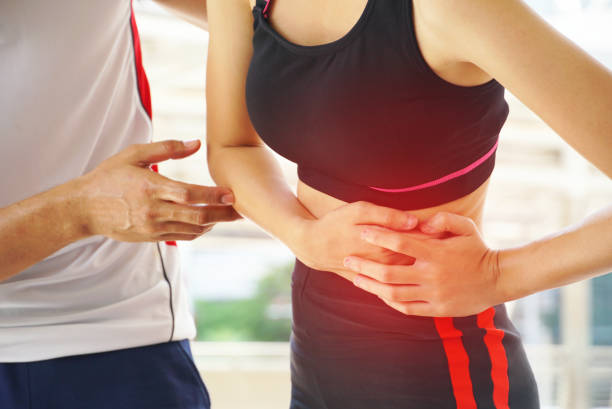Cramps, mood swings and bleeding during your menstrual cycle is not only inconvenient, it also makes it difficult to exercise. Research shows that more than two-thirds of female athletes experience negative side effects during and in the days leading to their period –cramps, bloating, headaches and back pain. If you go to The Little Gym a few times a week, then you may find your period affecting your workouts.
Training During the 3 Menstrual Phases
While the effects vary from one person to another, one thing is certain, exercise is never easy during our menstrual cycle. There are 3 phases of our cycle namely, the follicular phase (occurs between the first day of period and ovulation), ovulation phase (when the egg is released which is halfway through our cycle) and luteal phase (the time between ovulation and the first day of period).
Each of these 3 phases is fueled by 4 hormones. In the follicular phase, the FHS hormone tells the ovaries to produce egg-containing follicles. These follicles then create the 2nd hormone, estrogen, which in turn recreates the uterine lining. Once there is enough estrogen hormone produced, the 3rd hormone, luteinizing hormone, is produced which then releases the egg. The follicle containing the egg will start to create the 4th hormone, progesterone to prepare the body for pregnancy.
Now that we’ve talked about the 3 phases, it’s important to know that your body will respond differently to each one during training. This is why you should perform exercises or physical activity that is best suited for a particular phase.
1. Early follicular phase
Menstrual hormones are low during the start of your menstrual cycle (when you’re having your period). Symptoms like pain, lethargy and inflammation are common during this time. Train in a way that is gentle on the body, and focus more on recovery to avoid stresses which may trigger autoimmune responses. Get sufficient iron and eat meals with anti-inflammatory foods and antioxidants, like green leafy veggies and salmon. Oats and legumes and quality proteins are also helpful.
2. Mid follicular phase
During this time your estrogen level starts to go up. You may feel a bit energetic and for some women this is the best time to train harder and do HIITs and strength training.
3. Ovulation phase
As estrogen levels peak, your training performance will also follow. Right before ovulation, you may feel more motivated and very pumped up, like you can break new training records. Your appetite will also improve.
4. Luteal phase
At this phase your menstrual cycle hormones fluctuate. Energy levels drop and you may feel bloated. Suddenly, your body feels fatigued making it difficult to do high intensity workouts. For some women this is the ideal time to do steady-state training. Choose your workouts depending on how you’re feeling. Don’t force yourself to keep working out harder otherwise you become prone to injury or muscle soreness.
Understand that the shape of your cycle is unique and you need to accept the hormonal shifts. As you get older, menopause is another factor to consider. When periods stop and your hormones get a. bit crazy, it will lead to a whole array of symptoms. But that’s a topic for another day.
Diet and training with your menstrual cycle:
